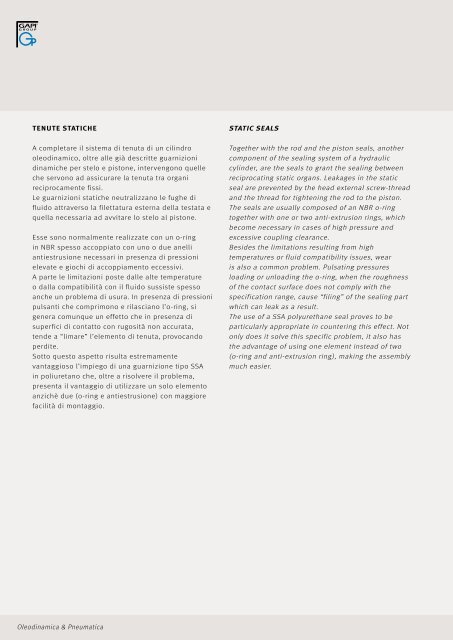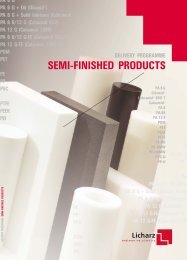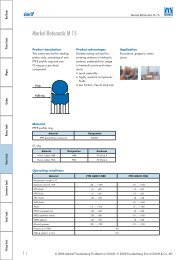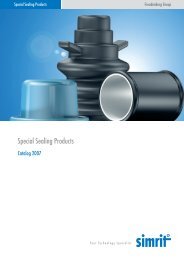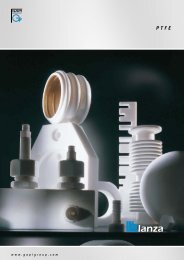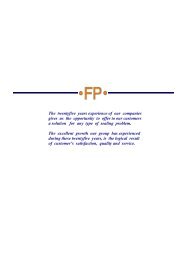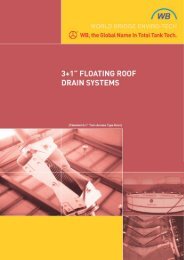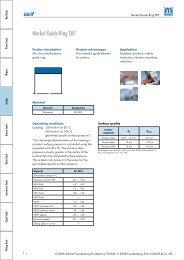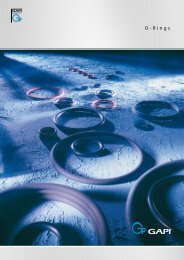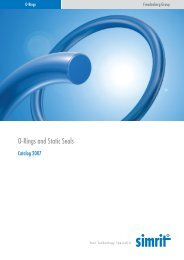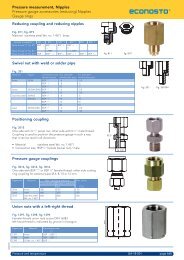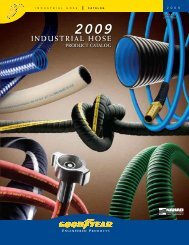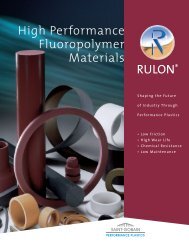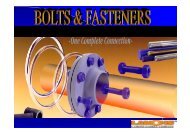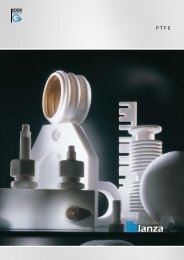Oleodinamica/Pneumatica Hydraulic/ Pneumatic
Oleodinamica/Pneumatica Hydraulic/ Pneumatic
Oleodinamica/Pneumatica Hydraulic/ Pneumatic
You also want an ePaper? Increase the reach of your titles
YUMPU automatically turns print PDFs into web optimized ePapers that Google loves.
TEnuTE STATICHE<br />
A completare il sistema di tenuta di un cilindro<br />
oleodinamico, oltre alle già descritte guarnizioni<br />
dinamiche per stelo e pistone, intervengono quelle<br />
che servono ad assicurare la tenuta tra organi<br />
reciprocamente fissi.<br />
Le guarnizioni statiche neutralizzano le fughe di<br />
fluido attraverso la filettatura esterna della testata e<br />
quella necessaria ad avvitare lo stelo al pistone.<br />
Esse sono normalmente realizzate con un o-ring<br />
in NBR spesso accoppiato con uno o due anelli<br />
antiestrusione necessari in presenza di pressioni<br />
elevate e giochi di accoppiamento eccessivi.<br />
A parte le limitazioni poste dalle alte temperature<br />
o dalla compatibilità con il fluido sussiste spesso<br />
anche un problema di usura. In presenza di pressioni<br />
pulsanti che comprimono e rilasciano l’o-ring, si<br />
genera comunque un effetto che in presenza di<br />
superfici di contatto con rugosità non accurata,<br />
tende a “limare” l’elemento di tenuta, provocando<br />
perdite.<br />
Sotto questo aspetto risulta estremamente<br />
vantaggioso l’impiego di una guarnizione tipo SSA<br />
in poliuretano che, oltre a risolvere il problema,<br />
presenta il vantaggio di utilizzare un solo elemento<br />
anzichè due (o-ring e antiestrusione) con maggiore<br />
facilità di montaggio.<br />
<strong>Oleodinamica</strong> & <strong><strong>Pneumatic</strong>a</strong><br />
STATIC SEALS<br />
Together with the rod and the piston seals, another<br />
component of the sealing system of a hydraulic<br />
cylinder, are the seals to grant the sealing between<br />
reciprocating static organs. Leakages in the static<br />
seal are prevented by the head external screw-thread<br />
and the thread for tightening the rod to the piston.<br />
The seals are usually composed of an NBR o-ring<br />
together with one or two anti-extrusion rings, which<br />
become necessary in cases of high pressure and<br />
excessive coupling clearance.<br />
Besides the limitations resulting from high<br />
temperatures or fluid compatibility issues, wear<br />
is also a common problem. Pulsating pressures<br />
loading or unloading the o-ring, when the roughness<br />
of the contact surface does not comply with the<br />
specification range, cause “filing” of the sealing part<br />
which can leak as a result.<br />
The use of a SSA polyurethane seal proves to be<br />
particularly appropriate in countering this effect. Not<br />
only does it solve this specific problem, it also has<br />
the advantage of using one element instead of two<br />
(o-ring and anti-extrusion ring), making the assembly<br />
much easier.


